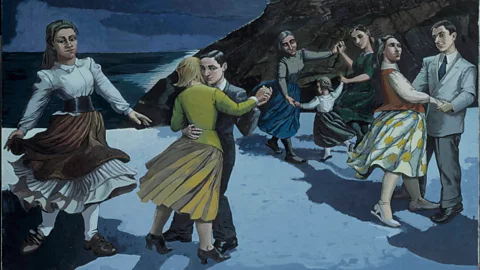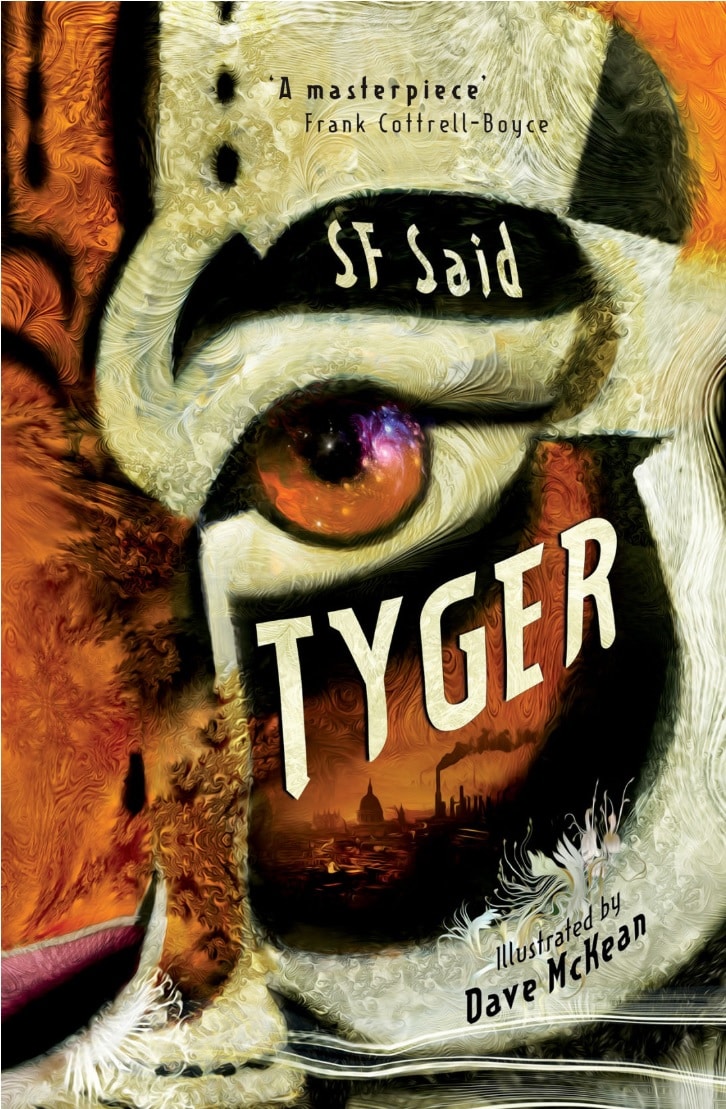Spring 1
Art and Design
Painting & mixed media: Artist study
This unit focuses on understanding narratives and descriptive language in art, exploring meanings behind paintings, and developing personal interpretations and abstract art pieces based on selected artists. Children will look at artists such as David Hockney, Paula Rego, John Singer Sargent and Fiona Ray. Children will learn how to discuss artwork, thinking about emotions, meaning and stories they may tell.
Pupils who are secure will be able to:
- Understand a narrative and use descriptive language to tell a story.
- Suggest ideas for the meaning behind a picture.
- Identify different features within a painting and use the formal elements to describe it.
- Be creative and imaginative in finding their own meaning in a painting.
- Use their own art or personal experiences to justify their ideas.
- Read a picture well and see beyond the first glance, analysing and evaluating it successfully.
- Reflect on personal experiences to convey through their own piece of abstract art.
- Contribute to discussions to either the class, group or talk partner.
- Understand and choose a meaningful message to convey through imagery, creating some different composition ideas.
- Select an appropriate artist.
- Collect a range of information that is presented in an interesting and pleasing way in sketchbooks.
- Generate an idea for a final piece, demonstrating some inspiration from their chosen artist.
- Produce a final piece of work, selecting appropriate tools and materials to create an intended effect.
- Experiment and revisit ideas, drawing on creative experiences.
- Work in a sustained way to complete a piece, making evaluations at each stage.


Computing
Introduction to Python
The children will be introduced to a coding skill known as Python - the basics of all coding. They will use a variety of apps and websites which promote the learning of python and how it works.
https://turtleacademy.com/playground
https://trinket.io/python/afc54a3e64
https://trinket.io/python/205c283a59 - Mondrien program
Pupils who are secure will be able to:
- Iterate ideas, testing and changing throughout the lesson and explain what their program does.
- Use nested loops in their designs, explaining why they need two repeats.
- Alter the house drawing using Python commands; use comments to show a level of understanding around what their code does.
- Use loops in Python and explain what the parts of a loop do.
- Recognise that computers can choose random numbers; decompose the program into an algorithm and modify a program to personalise it.
English
This term children are reading through the book Tyger as part of their Guideded Reading. Tyger by S.F. Said is a story about two children who find a wounded, mythical tiger in a London rubbish dump. The children, Adam and Zadie, must use their imagination and hidden powers to save the tiger and their world.

In their writing they will be focusing on writing a Newspaper report.
Key features of a newspaper
- Newspaper name
The name of the newspaper is always at the top of the page.
- Headline
A headline is an eye-catching title for your story, which summarises the information in just a few words. Newspapers often use alliteration to make their headlines sound really interesting.
- Short subtitle
The subtitle is a short title that gives more information about the report.
- Pictures
Pictures usually have captions beneath them to explain what is being shown.
- Conclusion paragraph
The conclusion paragraph can explain what might happen next.
What writing style is used in newspaper articles?
- 5Ws
The first paragraph should contain all of the 5Ws - what, where, when, who and why.
- Clear paragraphs
Each paragraph should give more detail about the story and be presented in a clear way.
- Direct and indirect/reported speech
Can be used to show the what other people have said about the story.
- Facts
Facts or statistics can be used to support your points and avoid using your own opinion.
- Formal language
Avoid chatty, friendly language in your report as it should be written to inform.
- Third person
Newspaper reports are written in the third person using the names of those involved and pronouns such as ‘he’, ‘she’ or ‘they’.
- Past tense
The main part of the report should be written in the past as the event has already happened.
Geography
Children will be learning and discussing the different energy sources the world use in order to power their homes, vehicles and businesses. Looking at the difference between renewable and non-renewable energy and the benefits of both. Where we get out energy from and the benefits of producing our own energy.
Pupils who are secure will be able to:
- Describe the significance of energy.
- Give examples of sources of energy and their trading routes.
- Define renewable and non-renewable energy.
- Discuss the benefits and drawbacks of different energy sources.
- Describe the significance of the Prime Meridian.
- Identify human features on a digital map.
- Discuss how transport links have changed over time.
- Locate UK cities on a map.
- Use six-figure grid references to identify features on an OS map.
- Consider and justify the location of energy sources.
- Design and use interview questions.
- Plot points on a sketch map.

PSHE
Safety and the changing body
Children will discuss, learn and know about the affects of alcohol and drugs on the body in the short term and long term and the risks involved. They will learn and know about the changes in the body as your grow including puberty. Being safe and responsible in the community is part of the core strands at Tattershall and the Year6 children will learn and understand some of the basics of First Aid, what it is, and why it can be important to know and understand what to do in an emergency situation.
Pupils who are secure will be able to:
- Understand some of the reasons adults decide to drink or not drink alcohol.
- Understand some ways to check that a news story is real.
- Understand how they should behave online and the impact negativity can have.
- Understand of changes that take place during puberty.
- Understand the menstrual cycle and that a male and a female are needed to conceive a baby.
- Understand that a baby changes in the womb and some of the baby’s requirements during the first months of life.
- Recognise when someone is choking; administer first aid to a casualty that is choking; and seek medical help if required for a choking casualty.
- Conduct a primary survey; place a casualty who is unresponsive and breathing normally into the recovery position; and identify when it is necessary for CPR to be given.
Science
Children will be covering the topic of Evolution and Inheritance.
Exploring variation and inheritance in different living things and how observations and fossil evidence have led to the theory of evolution. Discussing scientists, theorists and biologists such as Charles Darwin and A.R Wallace.
https://video.link/w/vl655c94359f2db - Tortoises in the Galapagos
https://video.link/w/uo-BxHWtGNQ - Who is A.R Wallace?
Pupils who are secure will be able to:
- Define and identify variation in organisms and recall that it is caused by inherited and environmental factors.
- Recall that living things produce offspring of the same kind but are not normally identical to their parents.
- Describe patterns of inheritance from parent to offspring in a given example or family tree.
- Describe what an adaptation is; it cannot be chosen and is usually inherited.
- Describe key characteristics that would help an organism to survive and explain how an adaptation helps the organism to survive.
- Explain how variation may affect survival within a population and recall what natural selection means.
- Recall what evolution is, identify differences between a living thing and its ancestor and describe key steps in the evolution of a species.
- Recall different types of evidence that can be used to explain evolution and describe methods that make scientists’ results or conclusions more trustworthy.
When working scientifically, pupils who are secure will be able to:
- Sort variation as environmental, inherited or a mixture of both.
- Evaluate a method by recalling variables that were effectively kept the same and those that were harder to control.
- Comment on the reliability of the results and the degree of trust.
- Consider how evidence is used to form theories and the degree of trust the evidence offers.
Skills children will learn and use:
Posing questions
- Raising questions throughout the enquiry process.
- Selecting the most appropriate enquiry method to answer questions and give justification.
Planning
- Suggesting which variables will be changed, measured and controlled.
Observing
- Using senses to describe, in detail and with a broader range of scientific vocabulary, what is noticed or what has changed.
Recording
- Using tables with columns that allow for repeat readings.
- Calculating the mean average.
Grouping and classifying
- Grouping in a broader range of contexts.
Analysing and drawing conclusions
- Suggesting with increasing independence how one variable may have affected another.
- Quoting relevant data as evidence of relationships.
- Identifying anomalies in repeat data and excluding results where appropriate.
- Comparing individual, class and/or model data to the prediction and recognising when they do not match.
Evaluating
- Identifying steps in the method that need changing and suggesting improvements.
- Identifying which variables were difficult to control and suggesting how to control them better.
- Commenting on the degree of trust by reflecting on accuracy (human error with equipment) and reliability (repeating results).
- Posing new questions in response to the data that would extend the enquiry.
Maths
This term the children will be focusing on the following maths skills:
- Dividing fractions by a whole number
- Multiplying by 10, 100 and 1000
- Multiplying decimals by a whole number
- Area, perimeter and volume
- Measurement including different units of measure for weight, length and volume.
